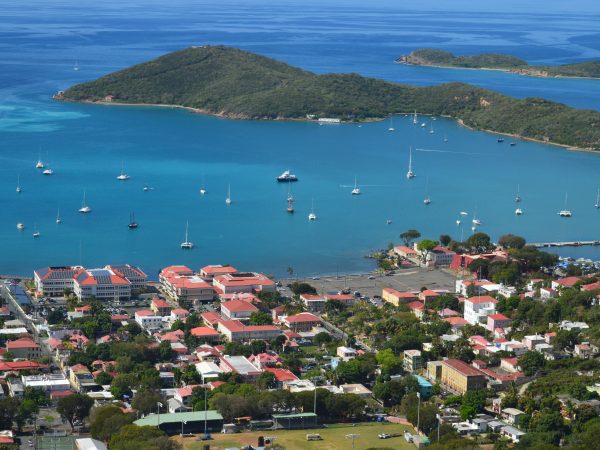Charlotte Amalie
Charlotte Amalie’s cobble stone streets and alley-ways call you to explore her historic charm. Founded in 1781 by Danish settlers, you can find 17th century furnishings in historic homes and glimpse into what colonial life must have been like. Fort Christian is the oldest surviving structure in the Virgin Islands and is listed in the National Registry of Historic Places. Downtown, or just town as Charlotte Amalie is frequently called, is now the center of a bustling business district and the seat of the government for the U.S. Virgin Islands. Below are some terrific tours you should not miss!!
99 Steps
Charlotte Amalie is famous for its step streets, or frigangs as the Danes called them. The 99 Steps were built in the mid 1700s from the ballasts in the hulls of the Danish sailing ships. These steps lead you from Government Hill to Little Tower Street. There are actually 103 steps and they were designed as staircase streets in an attempt to manage Charlotte Amalie’s steep hillside terrain. This frigang is the most popular in Charlotte Amalie due to its picturesque setting with beautiful flowers lining the street.
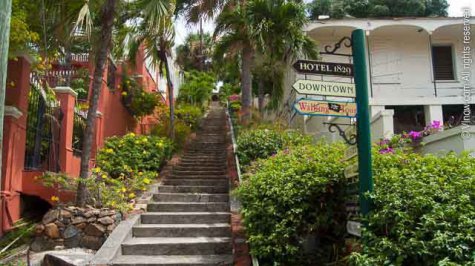
Fort Christian
Fort Christian was built between 1672 and 1680 and is the oldest standing structure in the Virgin Islands. It was designated a National Historical Landmark in 1977. The fort has walls 3 to 6 feet thick which helped repulse an attack by French forces in February 1678. It has functioned as a government building, the residence of the first Governors and the official place of worship. In the late 1720s-1730s the fort was expanded so it could continue to function as a government building; however, within 150 years the upper part of the fort was used as a prison which continued until 1983! Fort Christian is located between Veterans Dr and Emancipation Garden in Charlotte Amalie and is open Monday-Friday, 8:30a – 4:30p and has exhibits on the history of the Virgins Island from the Stone Age to the present.
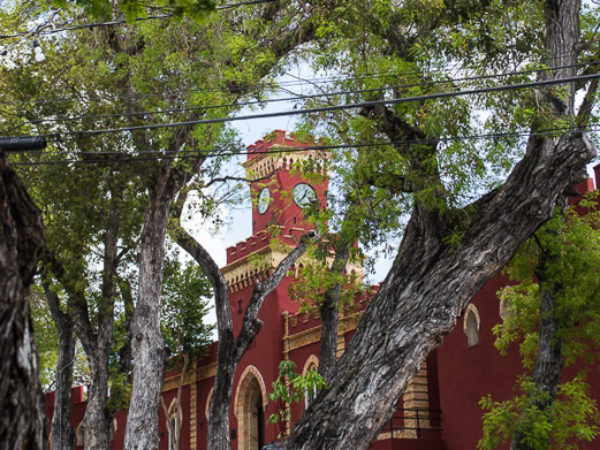
Emancipation Park
On July 3, 1848 all slaves of the Danish West Indies were emancipated; Emancipation Park was named in commemoration of this event. The fence that rings the park is made of chains and cannons from old ships recovered from Charlotte Amalie Harbor. Inside the park is a commemorative plaque, a copy of the Liberty Bell, and a bronze bust of a freed slave blowing on a a conch shell. In addition, the park is full of Lignum Vitae or gualacum (guayacan) trees. These trees are some of the hardest and slowest growing trees on planet earth and were used as foundation posts for island buildings during colonial times.
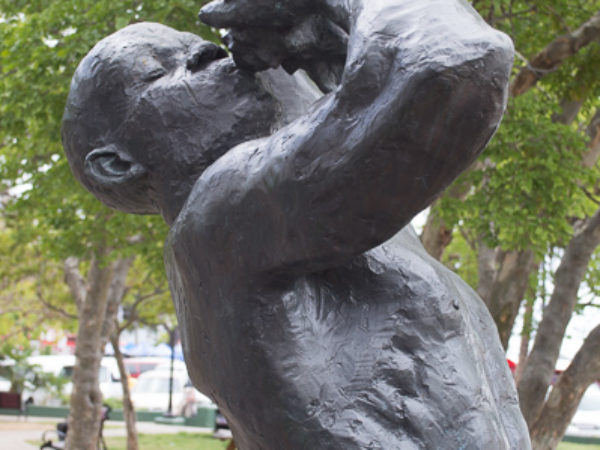
St. Thomas Historical Trust
The St. Thomas Historical Trust is headquartered in the Roosevelt Park area of Charlotte Amalie. Their mission is to identify, protect, and preserve the historical identity, sites, structures, and cultural heritage. The mini-museum is full of antique furnishings, old photos, and artifacts from the all over island. The museum is open from 10am to 3pm Monday through Friday and is staffed knowledgeable volunteers. The trust hosts events like walking tours, furniture making, and traditional broom making.
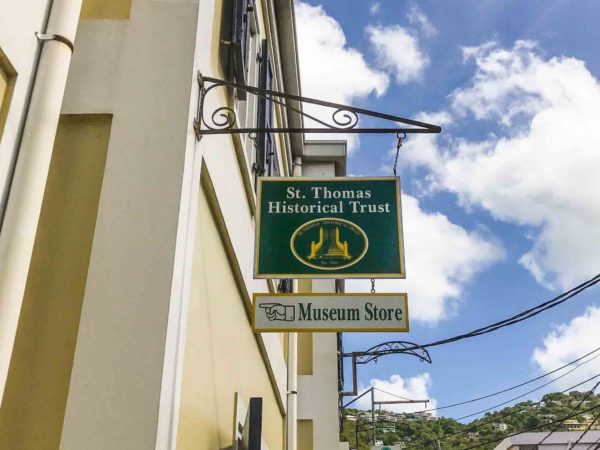
Gallery Camille Pissarro
The Gallery Camille Pissarro was once the home of Camille Pissarro, one of the most famous impressionists painters of the 19th century and is located at 14 Main Street in downtown Charlotte Amalie. Pissarro was born and raised on St. Thomas and many of his paintings are inspired by the beauty he found while living on the island. The gallery has several of his paintings on display. The gallery also has contemporary works of art for sale by Jan Dunn, Sylvia Kahn, Jenine Wesselman, and Lee Coplea.
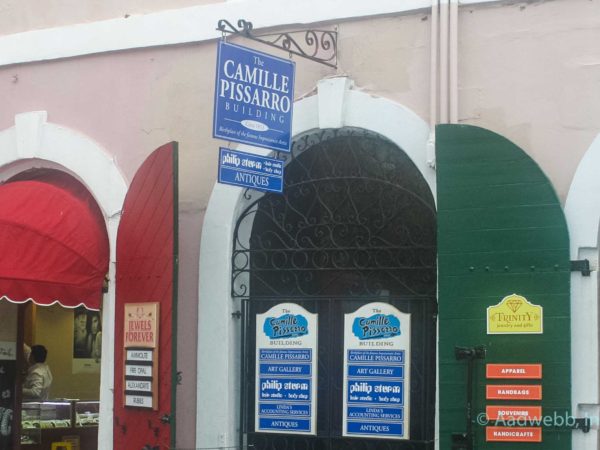
Frenchtown
Settled by immigrants from St. Barthelemy, the French Caribbean island, during the late 1800’s, Frenchtown became a village whose economy flourished from fishing. Fishing traditions are not the only thing that has remained of the French community that was once inhabiting the settlement, much of the culture has also been preserved. During the early light of the morning, one can catch fishermen returning from sea in their fishing boats to clean and sell the catches of the day from the docks or from nearby Gustav Quetel Fish Market. Nestled atop a hill in the center of Frenchtown lies the historic St. Ann’s Catholic Church, where locals and tourists alike travel to witness the beautiful French architecture and culturally distinguished masses.
French Heritage Museum
Located in the heart of Frenchtown, The French Heritage Museum is comprised of two small houses that exemplify the classic French architecture that was popular during the time of settlement. Amongst the hills of Frenchtown, you can also see a variety of these traditional-type houses along with more modern architecture. Once inside, visitors can peruse the mid-century artifacts that still remain from the original inhabitants of Frenchtown who descended from the French Caribbean island of St. Barthelemy in the late 1800s.

Throughout the Island
Drake's Seat
Originally built by Arthur Fairchild in 1933 and named after the English sea captain, Sir Francis Drake, Drake’s Seat rests atop an unsuspected bend in St. Thomas overlooking Magen’s Bay. Well known as one of the best lookout points on the island (alongside Skyline Drive Overlook), Drake’s Seat beckons visitors to rest where it is said Sir Francis Drake himself once stood to use as a vantage point to identify ships entering the bay.
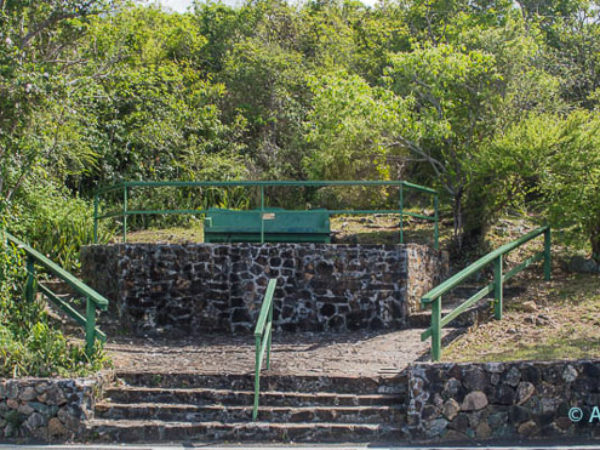
Hassel Island
Although smaller than its neighboring Water Island, Hassel Island is full of history and easily accessible for those seeking a more adventurous day excursion. Originally discovered in 1600 by Capt. John Smith, this island is home to a centuries old British and Danish military fort as well as the world’s first steam-powered marine railway.
